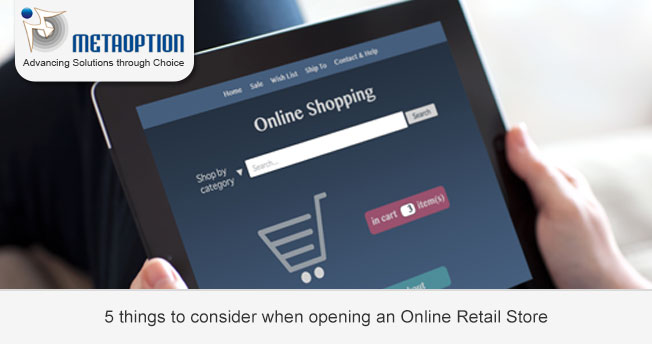Earlier Customers have comprised online shopping but when the pandemic accelerated the move to sell and shop online, consumer behavior just switched toward online shopping and there’s no going back. If you still have a limited or no online presence, this is the right time to invest in an e-commerce channel or online retail store.

But it’s not enough to simply create an e-commerce site, and wait for the orders to come flooding in. Retailers that want to open an online store need to pay attention to the key trends that are reshaping the industry and adopt a carefully considered approach. Here are seven points you should pay attention to if you want to build a successful online channel.
Points to consider when opening an online retail store
Seamless channel for customers’ shopping
Most of the shoppers choose to start their discovery online and finish it in a physical outlet. While some retailers had planned to offer Omni channel services only temporarily, many shoppers who have tried curb side pickup, BOPIS, or delivery said that they want to continue to use these services after the pandemic ends, as per HBR reports. It is therefore imperative for retailers to make sure that their online and offline channels are link-ed in terms of products, prices, offers, customer profiles, and shopping carts, so that shoppers can begin, continue, and end their journey across the channels prefer.
Flexible pricing and promotions
Earlier you can see that market conditions, product availability, and consumer preferences can change overnight. Having the data necessary to react fast is most important, as it allows retailers to design their portfolio taking into account shifts as per customer needs, as well as changes in sourcing and the supply chain. One size will not fit all, so you should organize shopper, occasion, channel, and customer prioritizes plans.
Reward loyalty
Boosting repeat purchases is one of the reasons, but not the only reason, to have an effective online loyalty program. Customer loyalty can be used to collect their data. This means you can use it to understand your customers’ preferences and purchasing routines. This data is extremely valuable and can be used to improve marketing decisions, develop a more targeted audience, and track trends.
Personalization for customers
By effectively capturing and using data you can not only effectively measure success, but you can deliver precision marketing at a lower cost. For effective personalization, make sure you are selecting the right customer with the right product. Use your data of your customers to send useful and suitable suggestions: be thoughtful, not invasive.
Data analysis
While personalization starts with collecting data from various sources, that is the easy part. The uncertain block for many retailers is organizing, analyzing, and transforming this data into meaningful information. To make this useful, retailers need to:
- Collect their data in a uniform, consistent format, so that you can easily link, compare, and analyze the data.
- Make sure the data is not siloed– which means, that it isn’t stuck into different systems.
- Use a proper analytical system to get a clear understanding of the data that helps to track the KPIs, and gives info on which businesses can perform well.
Go ahead with a unified commerce platform
Starting with the benefits of a unified commerce platform that goes beyond managing sales, inventory, prices, campaigns, offers, and more across both your physical and online stores. On top of handling all your channels reliably, when you run your business on unified commerce you can also manage all your business processes front to back, from POS to ERP to inventory to franchises and distribution. And with all your business data available in a single place, you get real-time data about your inventory, operations, and customers, so you can run data analytics to get info that matters.
To know more about LS Central, and how it can empower you to build an e-commerce business that justifies customers’ demands? Contact us today at MetaOption.


